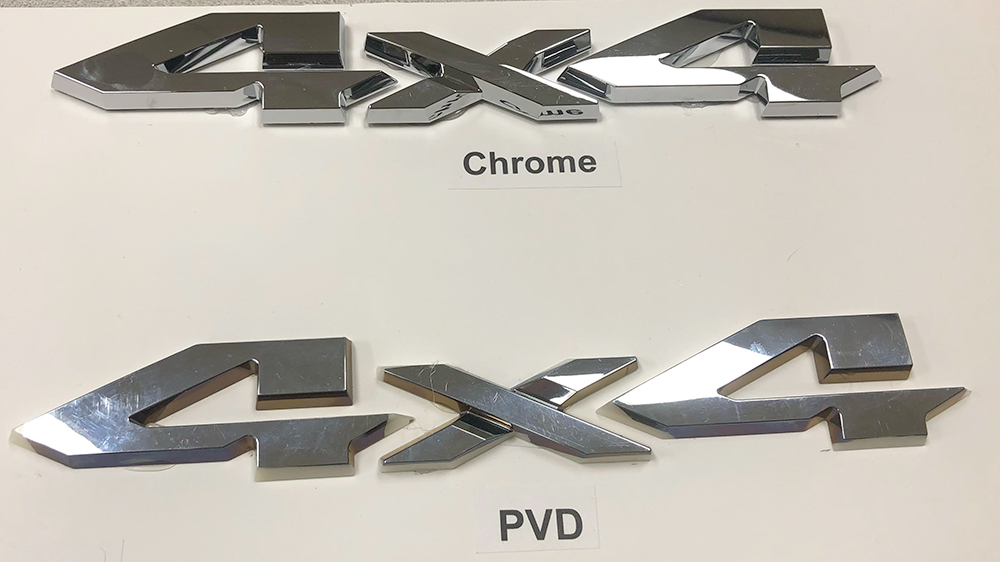Environmentally-friendly chrome-like finish for cars supports wireless sensing technologies for vehicle safety

Chrome finish for cars is both an aesthetic demand and an important protection against rust, but it comes with a high cost to the environment and to workers.
“The current process for making chrome is extremely toxic,” said Prof L. Jay Guo. “The chemicals are so bad that they’re actually banned in some parts of the country.”
The shiny chromium-look on automobile emblems, household fixtures, and decorative finishes is most commonly achieved through electrodeposition of hexavalent chromium (Cr (VI)). However, Cr (VI) is a known carcinogen and increases the risk of lung, nasal, and sinus cancer for workers who utilize it during the plating process. It also generates highly toxic emissions that pollute air quality, harming the health of both the environment and human populations.
“Automobile companies have been looking for replacement solutions that are safer and more environmentally sustainable,” Guo said.
Automobile companies have been looking for replacement solutions that are safer and more environmentally sustainable.
Prof. L. Jay Guo
Guo led a team that designed novel thin film structures that preserve the chrome-look but are made without using any chromium at all. Instead, these structures are made entirely with environmentally benign materials, such as common oxides, with or without any metals.
In addition, traditional chrome coatings can block the transmission of microwave frequencies, such as sensors and wi-fi signals, that are essential for autonomous vehicles to operate safely. Even non-autonomous vehicles are being equipped with this vehicle-to-vehicle communication technology, which can provide a “360-degree awareness” to minimize collisions and accidents.
“Our coating does not block these frequencies, so you can transmit signals very well,” Guo said.
To design this alternative coating, Guo’s team first developed a reinforcement learning algorithm. This algorithm generated several potential designs. Guo’s team then selected which design to test based on availability of the materials and the simplest method for fabrication. They completed the fabrication work in the Lurie Nanofabrication Facility.
However, despite its disadvantages, the most important function of traditional chrome coating is the protection it provides against rust.
“Our entire coating is less than a micron thick, so it can’t protect against rust the way traditional chrome can,” Guo said. “This is what we plan to work on next, because automobiles run in all sorts of weather, so this protection is very, very important.”
Funded by the Michigan Translational Research and Commercialization Advanced Transportation (MTRAC) Innovation Hub at the University of Michigan, Guo’s team will be working with industrial partners, including Sigma International based in Livonia, MI, to advance their coating even more.
“We want our coating to provide anti-scratch protection, while also creating a barrier against water and other damaging elements,” Guo said.
We want our coating to provide anti-scratch protection, while also creating a barrier against water and other damaging elements.
Prof. L. Jay Guo
Another goal for Guo’s team is to refine the production process to be highly cost-effective and easy to mass-produce, so car companies could more easily transition to the new material and process.
The current MTRAC-funded project began on September 1st, 2023. The paper, “Environmentally Sustainable and Multifunctional Chrome-like Coatings having no Chromium Designed with Reinforcement Learning,” is published by the American Chemical Society Applied Materials & Interfaces.
 MENU
MENU 
